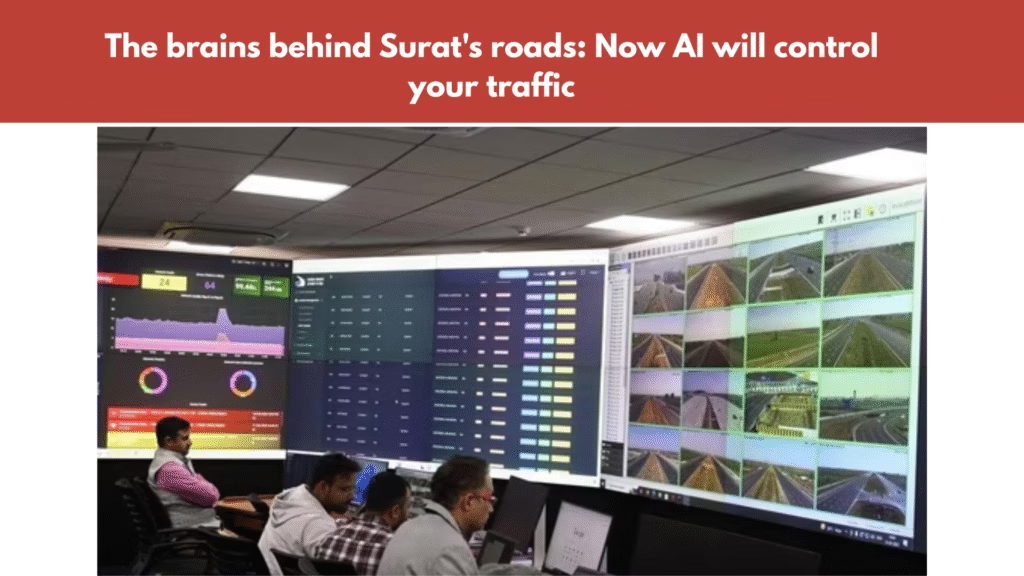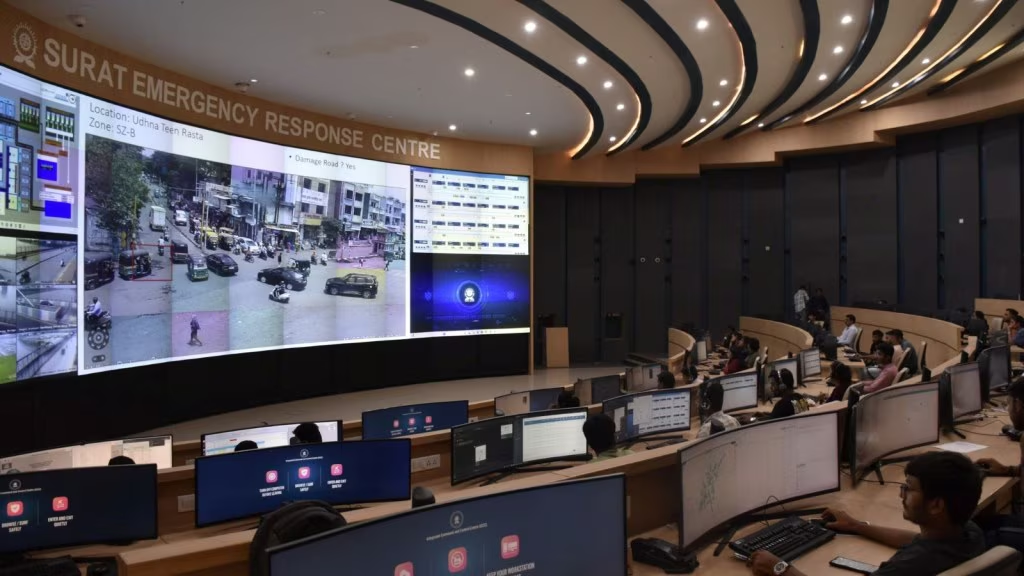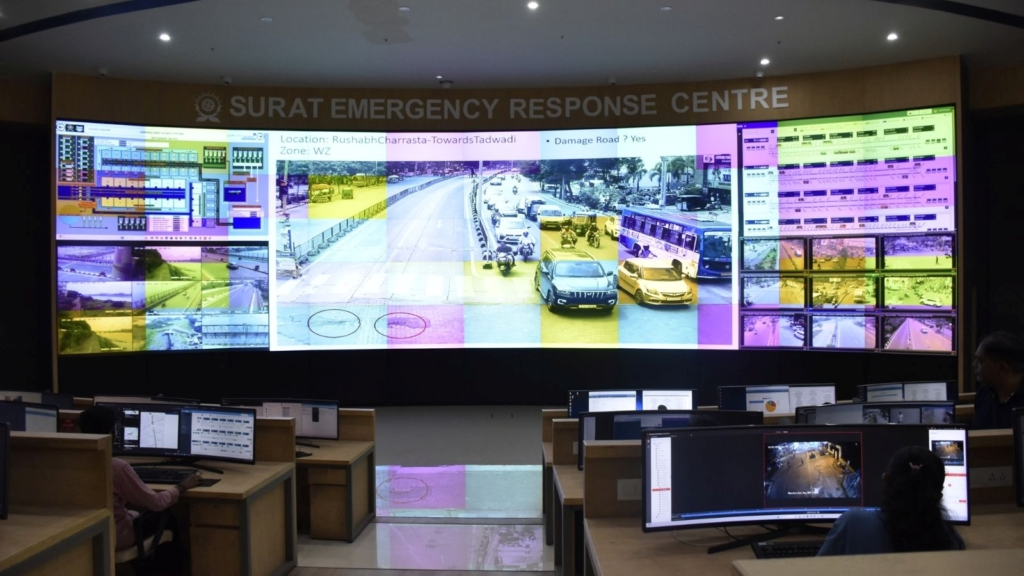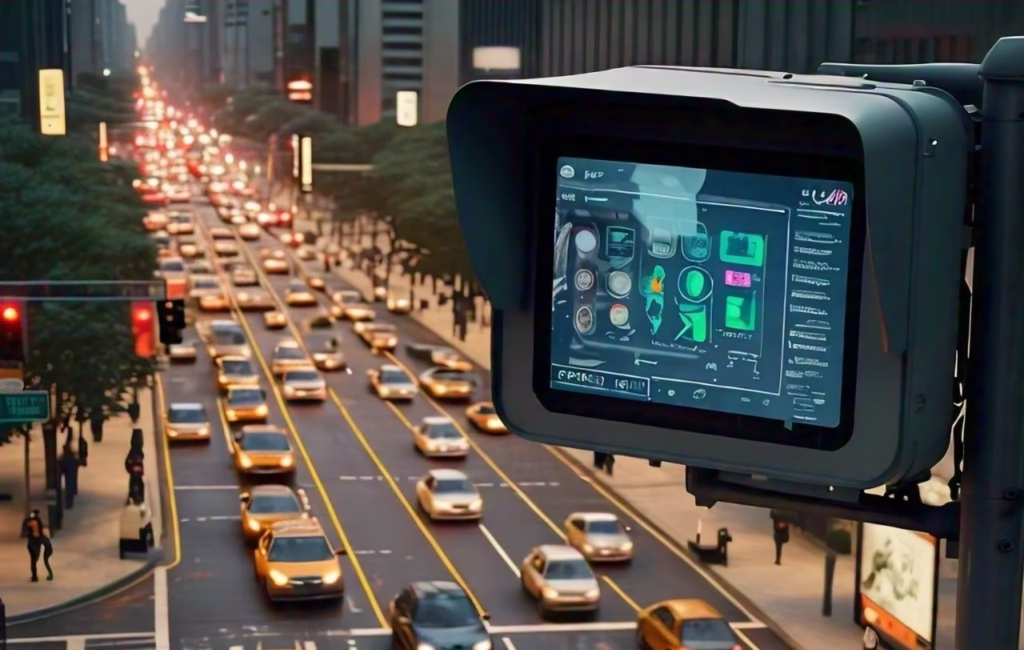AI-Based Smart Road Management in Surat: Revolutionizing Urban Traffic Systems

AI-based smart road management
Introduction: Surat’s Leap into the Future of Urban Transport
In a significant stride toward becoming a true smart city, Surat, one of India’s fastest-growing urban centers, has launched an AI-based smart road management system. This innovation marks a turning point in how traffic is monitored, controlled, and optimized, not just for ease of commuting but also for safety, sustainability, and efficiency.
Why AI in Road Management?
Urban centers like Surat face a massive challenge:
- Rapid population growth
- Exponential increase in vehicles
- Limited road infrastructure
- Rising pollution and congestion
Artificial Intelligence (AI) offers real-time decision-making, predictive analytics, and automated control, which traditional traffic systems simply cannot achieve. AI-based Smart Road Management
1. Overview of Surat’s Smart City Mission
Under the Smart Cities Mission launched by the Indian Government, Surat was selected as one of the 100 cities to receive funding and innovation support.
The Surat Municipal Corporation (SMC) has since been actively implementing technologies like:
- Command & Control Centres
- Smart Surveillance
- Waste management sensors
- AI-integrated traffic signals
The AI-based Smart Road Management System is the latest addition to this technological transformation.

2. What Is AI-Based Smart Road Management?
This system refers to the deployment of Artificial Intelligence technologies in:
- Traffic signal synchronization
- Congestion prediction and control
- Accident detection and alerts
- Emergency vehicle prioritization
- Pedestrian safety and monitoring
- Data-driven road planning
AI works alongside IoT sensors, CCTV cameras, GPS, and edge computing devices to monitor and optimize the traffic network continuously.
3. Major Components in Surat’s AI-based smart road management
a. AI-Powered CCTV Surveillance
More than 600+ high-definition AI-powered CCTV cameras have been installed at major intersections and busy roads. These cameras are capable of:
- Detecting vehicle speed
- Identifying traffic violations (e.g., red light jumping, wrong-way driving)
- Facial recognition (in law enforcement support)
- Number plate reading (ANPR)
b. Adaptive Traffic Signal Control (ATSC)
Unlike traditional timers, AI-integrated traffic lights adapt in real-time by:
- Detecting the length of vehicle queues
- Prioritizing lanes with higher congestion
- Providing green corridors for emergency vehicles
This helps minimize wait times and reduces fuel consumption drastically.
c. Smart Traffic Control Room – Surat Integrated Command & Control Centre (SICCC)
Located at the heart of the city, this 24×7 operational center is the brain behind the entire AI system. It coordinates:
- Traffic signal timings
- Surveillance data analytics
- Real-time vehicle tracking
- Public announcements and emergency alerts
d. Roadside Smart Sensors
Pressure-sensitive pads and radar sensors embedded in roads provide data like:
- Traffic density
- Vehicle types
- Pedestrian movement
- Weather conditions
e. AI Dashboard and Analytics
All collected data is fed into an AI dashboard, which uses machine learning models to:
- Forecast congestion hotspots
- Recommend alternate routes
- Send alerts to traffic police
- Improve long-term urban planning

4. Real-World Use Cases in Surat
a. Reducing Congestion on Ring Road and Varachha
The AI system monitors traffic inflow during peak hours in textile zones. By analyzing historical patterns and live feeds, it dynamically adjusts signal timings to reduce congestion by over 28%.
b. School Zone and Hospital Priority Alerts
AI-enabled systems detect ambulances and school buses via GPS tagging, triggering green corridor functionality to clear their path efficiently.
c. Real-Time Violation Detection
Motorists jumping signals or overspeeding are detected by AI within 1 second, and automatic challans (e-challans) are generated with video/photo evidence.
d. Pedestrian Smart Crossing
At several crossings, AI sensors detect pedestrian presence, triggering a walk signal or alerting approaching drivers.
5. Benefits Seen So Far in Surat AI-based Smart Road Management
| Metric | Before AI System | After Implementation |
|---|---|---|
| Average Wait Time | 6–7 minutes | 2–3 minutes |
| Road Accidents | ~180/month | ~120/month |
| Traffic Rule Violations | 15,000+ | 6,000–7,000 |
| Fuel Waste at Signals | High | Reduced by 35% |
6. How Surat’s AI Model Is Different from Others
- Edge Computing Integration: Many sensors process data locally, reducing dependency on central servers.
- Scalability: Surat’s AI system is modular, meaning new intersections or highways can be easily added.
- Multi-Lingual Interface: The user dashboards for officers are available in Gujarati, Hindi, and English.
- Public-Facing Mobile App: Citizens can check congestion updates and report issues via an upcoming AI-enabled app.
7. Role of Surat Municipal Corporation (SMC)
SMC is not just the implementer but also the innovator behind this system. They collaborated with:
- Indian Institutes of Technology (IITs) for AI modeling
- Startups and AI vendors for localized solutions
- Law enforcement for traffic rule enforcement integration
They conduct training workshops for traffic police and public awareness campaigns for commuters.
8. Challenges in Implementation
Despite successes, Surat’s AI road project faced hurdles:(AI-based smart road management)
- Data privacy concerns over facial recognition
- Resistance from drivers unfamiliar with AI rules
- Initial sensor misreads due to monsoon flooding
- High initial investment costs
But through community engagement and iterative improvements, the city overcame most of these.
9. What’s Next? Future Expansion Plans
SMC has plans to expand the AI road system further:
- Smart Parking Systems with real-time availability display
- Drone-based traffic monitoring during festivals and rallies
- AI-assisted street lighting control
- Integration with public transport like BRTS and Metro
10. Global Recognition and Replication Potential
Surat’s initiative is now being studied by urban bodies from:
- Ahmedabad, Pune, and Lucknow
- Nairobi, Kenya, for African smart cities
- World Bank and NITI Aayog are also documenting it as a model for mid-sized Indian cities
Conclusion: AI as Surat’s Silent Traffic Conductor
Surat has always been a city of enterprise and innovation. Now, it is setting an example in AI-driven urban mobility. The smart road system is a silent but powerful conductor, orchestrating the traffic symphony with intelligence, efficiency, and sustainability.
As this model evolves, Surat may well become India’s first truly AI-governed traffic city — a blend of tradition, technology, and transformation.

FAQs : AI-based smart road management
Q1. How does Surat’s AI-based traffic system work?
It uses AI algorithms, cameras, and sensors to control signals, detect violations, and manage congestion in real-time.
Q2. Who developed this AI system in Surat?
It’s implemented by Surat Municipal Corporation in collaboration with tech partners and urban development consultancies.
Q3. Is Surat the only Indian city with this system?
No, but it is one of the first to deploy a fully integrated and scalable AI traffic management system in a mid-sized city.
Q4. Is personal data collected through these systems?
Only vehicle number plates are tracked for enforcement. Facial recognition is limited and follows privacy protocols.
Q5. Will it expand to other areas like public transport?
Yes, Surat plans to integrate BRTS and Metro systems into the AI management dashboard.




